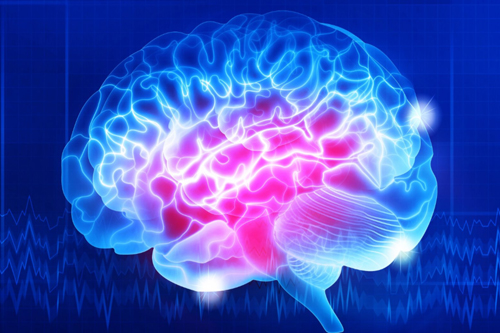
Functional neurosurgery
Functional neurosurgery in Nagpur: We lead the team in functional neurosurgery and are singularly committed to restoring function in the lives of chronic disorder patients. Our strategy involves a range of leading-edge interventions, including highly targeted neuromodulation and deep brain stimulation, giving new hope to people who previously had no other treatment option for their neurological condition.
Here at UVa, each patient is studied effectively. Our multidisciplinary teams specialize in specific disorders and conduct thorough examinations with all the latest diagnostic tools. Through the leadership of Dr. Ritesh Nawkhare, an expert in his field, we have a full spectrum of diagnostic measures in place and can execute therapeutic procedures using advanced technology to give every patient the best care possible.
How does the procedure of the diagnosis go?
This involves three chief diagnostic stages:
- Evaluation: Therefore, Our multi-disciplinary team comprises neurosurgeons, neurologists, and psychologists. In addition, Physiologists perform the most comprehensive clinical evaluation of your condition. That includes cognitive functionality and lifestyle. Thus, we can advise the best treatment course possible for you.
- Imaging: Hence, By employing the latest advanced imaging technologies, including CT scans, MRI tests, functional MRI (fMRI), and SPECT scans, we obtain total information about your health status. Hence, These latest imaging technologies provide accurate visualization of the status of your condition that helps in the appropriate decision-making process for both diagnostic and treatment purposes.
- Neurophysiological Monitoring: In this multifaceted approach adopted here, we monitor with electroencephalogram (EEG) and electromyogram (EMG), to evaluate the nervous system’s functionality and record pertinent data. It is such an important concept in mapping out any neurological complications by which to guide us in determining the apt intervention courses, especially for functional neurosurgical interventions.
Common Indications for Functional Neurosurgery
- Movement Disorders:
Parkinson’s Disease: Characterized by tremors, rigidity, and bradykinesia (slowness of movement).
Essential Tremor: Involuntary shaking, typically affecting the hands and arms.
Dystonia: Abnormal muscle contractions causing twisting and repetitive movements.
Tourette Syndrome: A neurological disorder characterized by repetitive, involuntary movements or vocalizations (tics). - Epilepsy:
Drug-resistant epilepsy, where seizures are not controlled by medications. Surgical options may involve removing the seizure focus or interrupting the pathways that lead to seizures. - Chronic Pain:
Conditions such as neuropathic pain, complex regional pain syndrome (CRPS), or other chronic pain syndromes may benefit from neuromodulation techniques. - Psychiatric Disorders:
Severe cases of depression, obsessive-compulsive disorder (OCD), and other treatment-resistant psychiatric conditions may be treated with functional neurosurgical interventions like deep brain stimulation.
Surgical Techniques in Functional Neurosurgery
- Deep Brain Stimulation (DBS):
Description: A reversible procedure that the involves implanting electrodes in specific brain areas. These electrodes deliver electrical impulses to the modulate abnormal brain activity.
Conditions Treated: Parkinson’s disease, essential tremor, dystonia, OCD, and some forms of epilepsy.
Mechanism: DBS affects neurotransmitter levels and neuronal firing patterns, alleviating symptoms. - Lesioning Procedures:
Stereotactic Surgery: Techniques that allow for precise targeting of brain areas to create lesions (small areas of damage) to disrupt abnormal circuits.
Common Lesions:
Pallidotomy: Lesioning the globus pallidus to reduce symptoms of Parkinson’s disease and dystonia.
Thalamotomy: Lesioning the thalamus to control tremors. - Responsive Neurostimulation (RNS):
Description: A system implanted in the brain that detects seizure activity and delivers electrical stimulation to disrupt the seizures before they manifest.
Indications: Patients with epilepsy who have not responded to traditional therapies. - Vagus Nerve Stimulation (VNS):
Description: A device implanted in the chest that sends electrical signals to the vagus nerve, which can influence brain activity.
Indications: Used primarily for epilepsy and treatment-resistant depression. - Spinal Cord Stimulation (SCS):
Description: Involves implanting the device that sends electrical impulses to the spinal cord to manage chronic pain.
Indications: Neuropathic pain, failed back surgery syndrome, and other chronic pain conditions.
Preoperative and Postoperative Care
- Preoperative Care:
- Comprehensive evaluation including neurological assessments, neuroimaging (MRI or CT scans), and psychiatric evaluations (if indicated).
- Patient education regarding the procedure, potential risks, benefits, and expected outcomes.
- Postoperative Care:
- Monitoring for complications such as infection, bleeding, or device malfunction.
- Follow-up appointments to adjust stimulation parameters (for devices) and evaluate symptom management.
- Rehabilitation and supportive care as needed.
Risks and Complications
As with any surgical procedure, functional neurosurgery carries risks, including:
- Infection at the implant site.
- Hemorrhage or stroke.
- Neurological deficits.
- Device-related complications (for implanted devices).
- Mood changes or cognitive effects.
What Does a Functional Neurosurgeon Do?
Functional neurosurgeons collaborate with neurologists in managing the patient who has chronic neurological disorders. The neurosurgeon can thus perform various surgical procedures depending on the diagnosis, which include;
- Intracranial monitoring: This aids in checking the source of seizures that cannot be controlled by medication.
- Laser ablation surgery: It is used to treat lesions that sit deep in the brain that traditional surgery cannot access.
- Vagus nerve stimulation: It is used in the management of epilepsy.
- Deep brain stimulation: It is performed to treat tremors and Parkinson’s Disease.
- Microvascular Decompression: Given to relieve trigeminal neuralgia and hemifacial spasm
- Percutaneous rhizotomy: Provided for trigeminal neuralgia
- Stereotactic radiosurgery: Provided for tumors that lie within deep portions of the brain.
